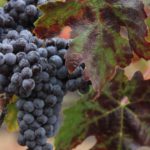Decoding a Wine Label – Part 1
I was having dinner recently with friends who happen to be wine novices. They enjoy wine, love trying new things and are learning what they do and don’t like about both red and whites. But most of all, they are very interested in increasing their wine knowledge. I mentioned that I was all too happy to help out at anytime but insisted that “Rome wasn’t built in a day”, meaning that you can’t learn it all in one day, one week, one month, no less one year. It would take time.
They mentioned that they mainly buy and enjoy American wines, usually from California, Washington, Oregon or Michigan. When I stated that there are wonderful and interesting wines from all around the globe, they said that they tend to shy away from most French, Italian or German wines because they couldn’t understand what all the words meant that were on the label.
What a fine can of worms to open up right off the bat I thought. How was I going to explain, teach and describe all the terms that may appear on any certain foreign label in one single sitting. I thought it would be pretty easy because I have schooled myself over the years to read and understand the wordage that appears on those labels. But then I put myself in their shoes, thinking back to when I thought I needed to take advanced foreign language classes to understand each and every term I had no clue of its meaning. Now, where to begin.
First of all, European wine laws generally provide more information on their labels then most others around the world. Most people looking to buy a bottle of wine first and foremost look for the style they are looking for, such as a Cabernet, Chardonnay, Merlot, or Riesling. Then a quality or recognizable producer and possibly the vintage date. Said and done! Be it foreign or domestic, about the only thing that is standard on any bottle of wine on a shelf is the price tag. Looking at a European bottling though can be as confusing as deciphering a Chinese road sign.
If you were looking for a Cabernet or Merlot from France, you would never see those words printed on the label. You would often see the words Pauillac, Margaux, St. Emilion or Medoc, plus so many other words, you had no clue as to what you were buying. If you were looking for a Chardonnay, you would see bottles of white labeled Chablis, Macon-Lugny, Meursault, Montrachet and Pouilly-Fuisse. All Chardonnay’s, yet labeled with the region that they originate from. By this point, most people are so confused, they cross the aisle and head for wines they can totally understand.
I feel your pain. I have been down that same road many moons ago. But that is no reason to eliminate potentially mind blowing offerings from your wine vocabulary simply because of their unfamiliar nature. They can be some of the best made wines on the planet. Buying a wine from France, Italy, Germany and other regions can certainly be a challenge. Yet times are changing. Realizing slumping sales and a whole new generation of drinkers to the wine world, some wineries are now changing their old habits and listing the grape varietals on their labels. With a little extra knowledge in your pocket, I believe you will be able to overcome your fear of diving into the unknown. That is why I am here to help. Class is now in session.
In Part 1 of my series, let us take a look at all things French. From the Bordeaux region to Burgundy, from the Loire Valley to the Cotes du Rhone. These will be the terms you are likely to see on the wine labels from these areas along with a short description that will help you understand their meaning. In the end, I hope that the labels will be easier to understand, helping you select a wine that will enhance, not only your palate, but your wine knowledge as well.
TERM MEANING
AC Appellation Controlee
AOC Appellation d’Origine Controlee
Annee Year the grapes were harvested
Barrique 225 litre oak cask
Blanc de Blanc White wine made from white grapes
Blanc de Noir White wine made from black/red grapes
Brut Dry (usually for sparkling wines)
Cave Cellar
Cave cooperatif Cooperative cellar
Centenaire Grape vines over 100 years old
Cepage Grape variety
Chateau Property making/bottling its own wine
Clos Walled vineyard
Commune Village
Cote Slope or hillside
Cremant Sparkling
Cru Growth from a specific vineyard
Cru Bourgeois Classification used for Medoc properties
Cru Classe Classified growth
Cuve Wine vat or tank
Cuve Close Bulk method for making sparkling wine
Cuvee Blend
Demi-Sec Semi-dry
Domaine Property making/bottling their own wine
Doux Sweet
Elevage Maturation and pre bottling treatment
Foudre Large wooden vat
Fut Small oak cask
Grand Vin Chateau’s main wine
Grand Cru Highest vineyard classification
Grand Cru Classe Bordeaux 1855 classification designation
Grand Marque Brand
Methode Champagne method of making
champenoise Sparkling wine
Mis en Bouteille Bottled
Moelleux Slightly sweet
Monopole Exclusive brand name
Negociant Merchant
Petillant Light sparkle
Premier Cru Vineyards 1st growth status
Recolte Harvest or vintage of high quality grapes
Reserve Chateau’s superior wine
Rouge Red wine
Sec Dry
Sous Marque Secondary brand
Tete de Cuvee Wine from its first pressing
Vendange Harvest
Vielles Vignes Old vine
Vigneron Wine grower
Vignoble Vineyard
Vin Wine
Vin de Pays Country wine
Vin de Table Table wine



